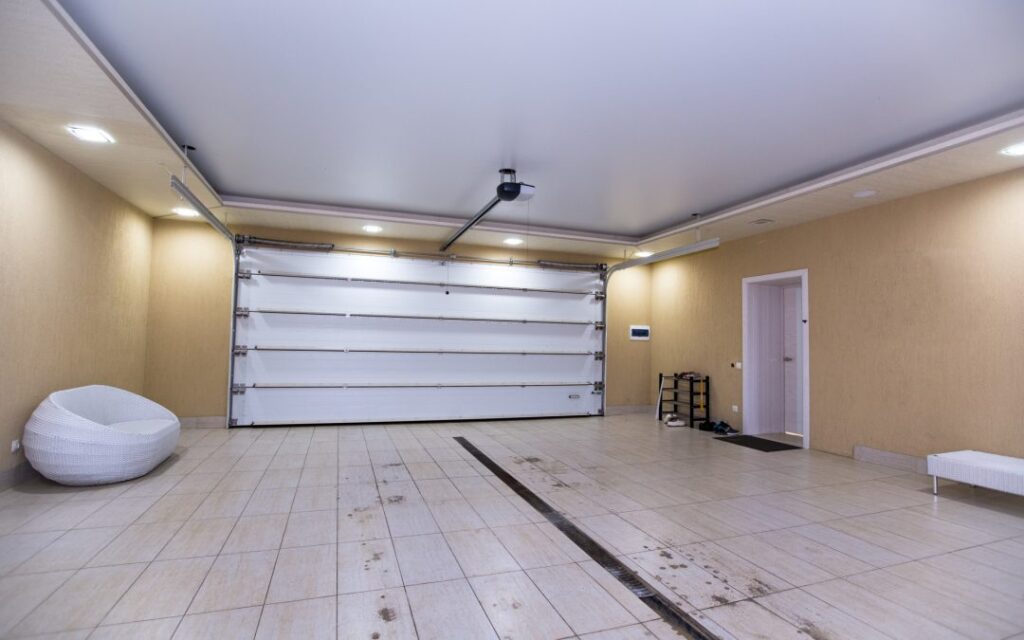Transforming a garage into a living area presents an exciting opportunity to create additional functional space within one’s home. This conversion process, however, can pose unique challenges due to the typical size constraints and layout peculiarities of garages.
An effective solution lies in strategic planning and execution aimed at maximizing available space without compromising on comfort or functionality.
The focus of this article is twofold: smart furniture arrangement and viable storage solutions. Adopting intelligent furniture placement techniques not only ensures effective use of space but also contributes significantly towards creating an aesthetically pleasing environment.
On the other hand, innovative storage solutions are invaluable in maintaining orderliness while freeing up much-needed space for movement and leisure activities.
Together, these strategies offer practical insights that can guide homeowners through the garage conversion process with ease and confidence, ultimately fostering a sense of belonging within their newly created living spaces.
Key Takeaways
– Smart furniture arrangement and storage solutions are key to maximizing space.
– Multi-purpose furniture conserves floor space and reduces clutter.
– Understanding the dimensions and characteristics of the garage space is important for furniture arrangement.
– Effective storage solutions optimize resources and adapt the space.
Implementing Smart Furniture Arrangement
Smart furniture arrangement, which involves strategically placing furnishings to optimize space, can significantly enhance the functionality and aesthetic appeal of a garage converted into a living area.
This process is not simply about stuffing all available pieces into an area but employing thoughtful design strategies that maximize utility while also contributing to an inviting atmosphere.
The utilization of multi-purpose furniture, for instance, not only conserves floor space but also reduces clutter by providing built-in storage options.
Corner units such as sofas or bookcases can effectively utilize what might otherwise be wasted space.
Implementing smart furniture arrangement requires a detailed understanding of the unique dimensions and characteristics of the garage space in question.
Considerations must include the height of the ceiling, location of windows and doors, and any architectural features that could impact placement options.
Moreover, it is beneficial to map out potential arrangements on paper or through digital rendering software before physically moving heavy items around.
This pre-planning phase allows for experimentation with different layout ideas without physical exertion or risk of damage to furnishings.
The key strength behind smart furniture arrangement lies in its ability to create balance within a room while maintaining functionality.
For instance, aligning larger pieces along one wall can free up open areas for movement or other uses – such as exercise equipment in a home gym conversion – without compromising comfort levels.
At the same time, smaller items like side tables and lamps should be positioned close enough to seating areas for convenient use but not so near as to obstruct pathways.
A successful implementation creates an environment where every item serves its purpose efficiently while contributing positively towards the overall ambience; thus making a converted garage feel more like an integral part of the home rather than just an afterthought addition.
Creating Effective Storage Solutions
Incorporating efficient storage solutions in an erstwhile vehicle park can be likened to a caterpillar transforming into a butterfly; it’s all about optimizing resources and adapting.
This metamorphosis, founded on the principles of minimalism and functionality, is evident in the 30% rise seen in garage conversion projects that prioritize innovative storage designs according to recent home improvement data surveys.
By reimagining their garages as multipurpose living areas, homeowners are choosing to transform underutilized square footage into functional spaces that satisfy their need for additional room while maximizing existing structural elements.
The process begins with assessing the potential of the space and identifying opportunities for integrated storage solutions.
Enclosed cabinetry around perimeters, vertically oriented shelves anchored onto walls or overhead racks suspended from ceiling joists are some proven methods that have been adopted successfully.
These not only provide ample storage but also effectively utilize vertical space which would otherwise remain unused.
Moreover, they offer seamless transition between different zones within the converted area – whether it be a home office corner or a cozy reading nook – without compromising on functionality or aesthetics.
Adaptable furniture pieces also play an integral part in this transformation journey.
Items such as convertible beds, expanding tables, and built-in benches with hidden compartments allow flexibility while simultaneously reducing visual clutter.
They merge practicality with style, bringing comfort to daily routines yet fostering a sense of belonging among inhabitants who share this newly converted space.
With thoughtful planning and strategic implementation of these effective storage solutions, garages can undergo amazing transformations from mere parking spots to vibrant living areas brimming with character and utility.
